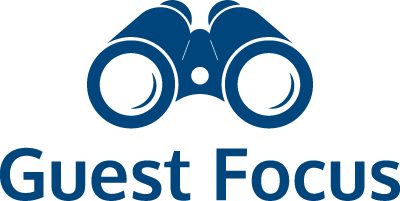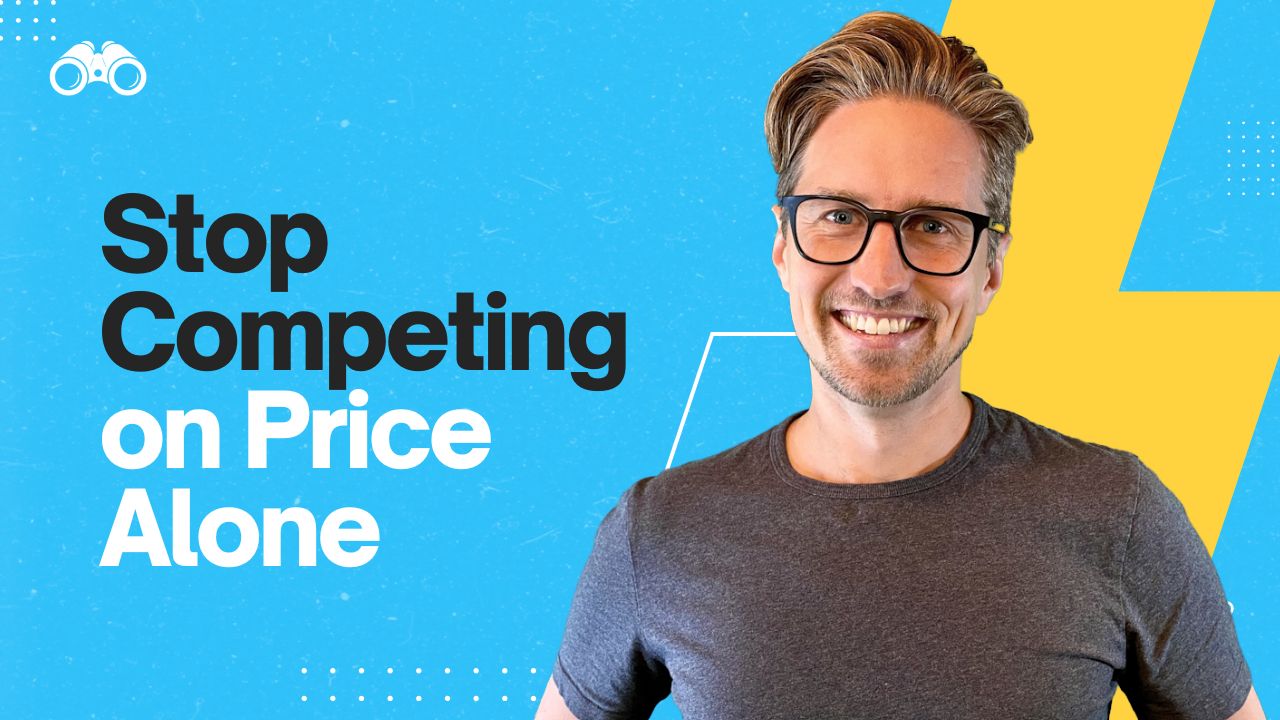Breaking Free from the Profit Plateau
This is part 5 of our Pricing Series. You can watch the whole series here, or start with part 1 here.
You’re running great tours. Your guests are happy, reviews are glowing, but your profit’s not where it should be. We call this the profit plateau. This refers to a stage in your tour business where revenue continues to grow or hold steady, but profit margins stay flat or even decline.
Or put another way, let’s say you tripled the size of your business. You’ve got three times as many customers, but at the end of the day, you’re working three times as hard. Maybe you’ve got more stress, but your take home profit, or your take home pay as the business owner, has not increased.
It’s time to access the tools that will get you out of this profit plateau, so you can not only charge what you’re worth, but charge what you need to make this into a profitable, sustainable business.
Understanding Competitive Pricing
Let’s start with competitor pricing. This is a strategy where businesses set their prices primarily based on what similar competitors charge, rather than on customer perceived value.
Now, as a reminder, just charging what other people are charging in your market is not a smart pricing strategy. It does not replace the important work of cost plus analysis and starting with that because you don’t know what those other operators’ costs are. You don’t know if they own, if they lease, you don’t know if they are relying on savings. You don’t even know if they’re profitable themselves.
So I find the best way to think about a competitive pricing strategy is that it’s more about positioning than it is a profitable or sustainable business model. For example, you might have the exact same tour, and you look out and you realize a competitor has a similarly priced tour, so you put a markup of 20% and maybe you invest a little bit in your website so it has a more premium feel. And you invest in a photographer to come take pictures. You haven’t actually substantially increased the cost of the tour at all, but you’ve positioned the tour as a superior or more premium or higher quality experience based on the marketplace.
The Competitive Pricing Ladder
Let’s have a look at the competitive pricing ladder.
First, we’ve got pricing below market. This is sometimes referred to as penetration pricing. This usually works if you’re high volume or low cost or you’re just getting started, but honestly, most small tour operators can’t survive on this model. This is often a volume game. Think Walmart and dollar stores.
The second is pricing at market, or parity pricing. This is common when you’re similar to your competitors, or if there’s a lot of competition. It works generally if your costs and value proposition are aligned. So for example, if we’re in a really highly touristed area, we might be forced into price parity, but a clever tour business owner might try and reduce their costs by leveraging technology that helps keep admin costs down. They might tap into some cheaper distribution channels or low cost but effective marketing to ultimately be more profitable.
And finally, we have pricing above market or premium pricing. This requires clarity, differentiation and confidence in your value. This is where some of the most profitable tour businesses operate. This competitive pricing framework is ultimately about helping you choose your lane, not necessarily trapping you into someone else’s.
Value Based Pricing: The Real Money Maker
So what about value based pricing? Well, in this framework, we are setting prices based on the perceived value of your guests, your clients and your customers, not your costs of the tour, and not what your competitors are charging. In this framework, I’m going to encourage you to not think at all about what their competitors are charging.
Remember that our guests aren’t simply buying a tour or an activity, but they’re ultimately buying an outcome, and really, they’re buying the perceived likelihood of getting the outcome that they want. Now that could be something like a solution to one of their challenges or removal of some of their headaches and frustrations. It could be buying the likelihood of having that picture perfect easy vacation where everything is taken care of.
And I really wanted to highlight there the perceived likelihood of getting that outcome as being really important. That’s the key to why brands are so important. It represents the trust that we have that an individual or company is ultimately going to deliver on their promises. When we buy an iPhone, we’re buying into that brand promise that this is going to be a high quality device, and no matter how many times my daughters throw it on the ground, there’s a good likelihood that it’s going to survive. And often that brand trust gives you premium pricing power.
Building Perceived Value
Here’s some other key factors when thinking about driving up the perceived value of your tours, activities and experiences:
- Exclusivity and access – This includes experiences guests can’t easily get themselves, like special venue access or tours led by local experts or scholars.
- Memorable moments on tour – Think of emotional touches, like a surprise toast at sunset, thoughtful local gifts that create lasting memories and the many ways we can wow and delight our guests on tour.
- Transformational experiences – These are activities that guests view as personal milestones or brag worthy events, elevating the perceived significance of your tour and likely offering status to your clients.
- Trust and professionalism – Most important here is strong branding, professional imagery, clear communication, easy to use websites, compelling testimonials. All of these build trust and allow for premium pricing based off of that perceived value.
A lot of things around perceived value don’t have much to do with your variable costs or fixed costs per tour, other than we have to make sure that we’re covering those costs to break even, or at least hit our target profit margin.
Finding Your Strategic Pricing Window
Cost-plus pricing sets your floor – the minimum you need to charge to stay profitable. Value-based pricing helps you reach your ceiling – the maximum your ideal guests will pay based on the value they perceive.
The space between your floor and ceiling? That’s your strategic pricing window. And here’s the thing – you can actually raise that ceiling by increasing the perceived value of your experience.
The bigger the gap between what it costs you to deliver and what guests are willing to pay, the more room you have to work with your pricing strategy.
Getting the most out of value based pricing works best when you have product market fit. This is when your tour or activity solves a real need or specific desire for a very specific group of people, and they’re willing to pay for it. This is what our Guest Focus Formula™ is all about, a proven method for helping tour operators grow by getting crystal clear on who their ideal target guest is, and designing experiences that are perfectly tailored to them.
In many ways, this takes us back to Sales 101. You are going to be able to make more compelling offers. You’re going to be able to increase the perceived value to your ideal target guest by deeply understanding them, by knowing who you’re selling to, and not trying to create the same offer for everyone who’s coming to your destination.
The Mattress Sales Lesson
A mattress salesperson can reframe a $4,000 purchase perfectly. Instead of focusing on coils and foam, they ask: “What’s it worth to have incredible sleep for the next 10 years?”
Suddenly, the customer wasn’t buying a mattress – they were investing in better health, productivity, and happiness. The price seemed reasonable for those outcomes.
Your tours work the same way. You’re not selling a food tour – you’re helping a couple reconnect or giving a traveler that authentic local experience they’ve been craving. That hiking trip? You’re offering an escape from routine, a physical challenge, or a chance to recharge.
Take a corporate food tour in San Francisco. You’re not delivering food and stories – you’re building team communication, boosting morale, and reducing turnover. That outcome is incredibly valuable to a business, which is why corporate experiences command higher prices than public tours.
When you connect your experience to outcomes people deeply care about – connection, adventure, personal growth, team building – price becomes secondary. You’re solving real problems and fulfilling genuine desires.
This shift in thinking is what value-based pricing is all about. Stop worrying about what you think people will pay and start recognizing the true impact you’re creating for your guests.
Testing Your Price Points
So how do you as a tour business owner know what the market will bear? What is that maximum amount someone’s willing to pay? You can’t look it up. This is what’s so challenging about pricing. But guess what? You don’t guess, you test.
You try different price points. You experiment with A/B versions of your sales pages. Maybe you run a small pilot with a more premium version of your tour. We track conversions, reviews, and check in with guest satisfaction the whole way through. This is exactly why we love working with tour operators. Nine times out of ten, we’re helping you build the confidence to raise your prices and test what’s possible. We’re also giving you the tools to increase your perceived value and build a more profitable business.
Most operators are undercharging for the incredible experiences they create. Once you see the real value you’re delivering, pricing becomes much clearer.
So it’s time to revisit your tour pricing calculator and get comfortable with increasing those margins based on the value you provide, not just the costs and not just what your competitors are charging.




